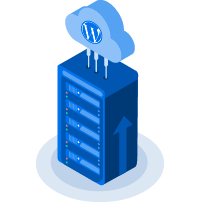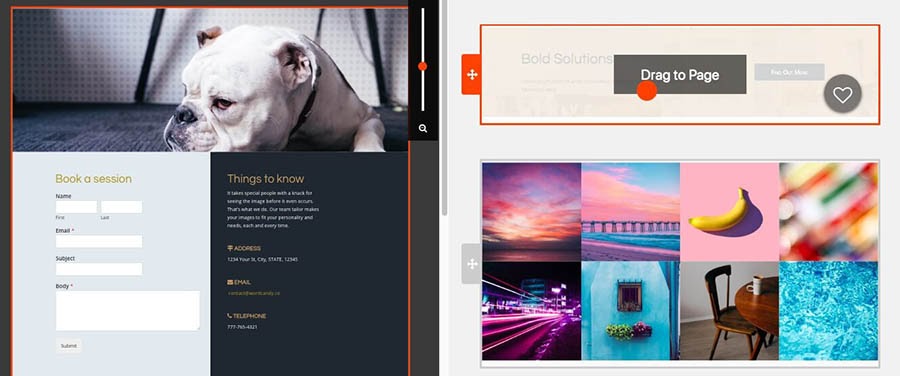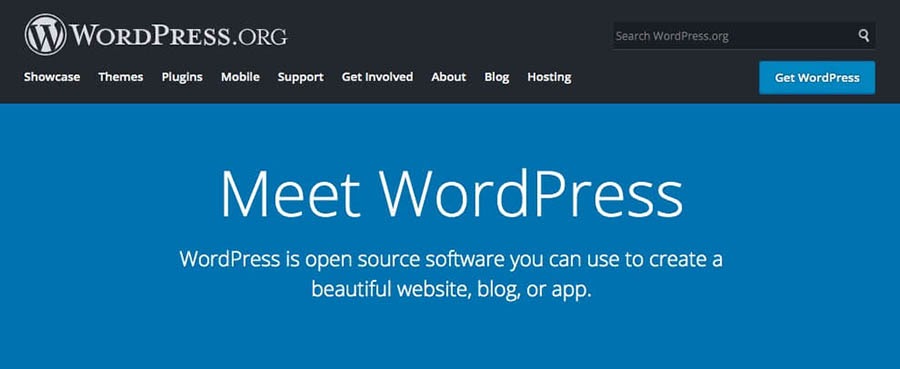What Are the Different Ways to Build a Website?

Before you can get your new website online, you’ve got a lot of important decisions to make. Whether you want to start a blog, set up an online store, or launch a freelancer portfolio, you’ll first have to figure out how you’re going to build it. However, evaluating all of your options can feel a little overwhelming.
Fortunately, it’s not that hard to understand the most common ways to build a website. Once you know what your choices are — along with each one’s pros and cons — you’ll be well-positioned to make the right decision for your unique site.
In this article, we’ll review the four main ways to build a website. We’ll look at how much each option usually costs and touch on some of their benefits and drawbacks. Let’s dive right in!
What to Consider Before Building a Website
Before you can decide how to build your website, you’ll need to consider two critical factors. These are:
- Time. The time required to build a website can vary widely based on the method you’re using. So it’s essential to know whether you’re in a rush or can afford to take your time.
- Budget. Building a website can be inexpensive if you go about it the right way. But if you want to avoid advertisements on your site or access enhanced features, for example, you’ll likely need to budget some funds to get what you need.
Knowing how much time and money you have available for your website project is key. This will help to guide you when evaluating the following options, as there’s no “one right way” to create a website.
Our automatic updates and strong security defenses take server management off your hands so you can focus on creating a great website.WordPress + DreamHost

4 Different Ways to Create a Website
As we mentioned earlier, there are many different ways you can approach the website development process. We’ll go over four of the most popular techniques and see how they compare.
1. Use a Website Builder
A website builder is a tool that enables you to build a website very quickly. These solutions typically feature drag-and-drop functionality, include templates for design, and don’t require you to have any coding knowledge.
One example is the WP Website Builder that comes free with all of our plans here at DreamHost.

This builder enables you to choose from many pre-styled blocks of content. For example, you can select a contact information block specifically styled for restaurant websites. Then, you can customize it with your own colors, fonts, imagery, and so on.
Related: What Are Website Builders? Everything You Need to Know
Website builders can save you time and money, enabling you to get your new site up and running fast. Plus, with the right builder, you can tweak elements of your site’s design to fit your brand. So you don’t necessarily have to worry about ending up with a “cookie-cutter” website.
At the same time, it’s worth noting that any website builder is by nature limited and might not give you as much control over your site’s look and functionality as some of the other options on our list. However, we’ll talk later about how some methods can be paired with a website builder to help you create innovative websites.
2. Opt for a Content Management System (CMS)
Content Management Systems (CMSs) are often confused with website builders. However, a CMS is a complete platform for creating and publishing digital content. They’re a lot more complex and flexible than a website builder and can be used to create more than just websites.
By far, the most popular CMS is WordPress, with a market share of over 60%.

Another thing that sets a CMS apart from a website builder is that it’s built on powerful database software. This means it can store content and other resources in a highly organized way. This enables you to display and arrange your content in unique ways and even incorporate custom code.
There are other CMS options on the market as well, including:
- Joomla. This is a free and open-source CMS. While it’s similar to WordPress in that way, Joomla isn’t quite as user-friendly and has a steeper learning curve.
- Drupal. Drupal is another open-source option and is even more complex than Joomla. It’s a platform geared more towards experienced web developers.
- Magento. Magento is an Adobe product that caters specifically to e-commerce websites and their needs. There is an open-source version of Magento as well.
CMSs offer lots of flexibility and can be used to build nearly any type of website. Plus, you don’t need much technical know-how to get started. Fortunately, many high-quality web hosts (including us!) offer one-click installation of many CMSs, especially WordPress. Not sure which CMS is best for your site? Here are 12 reasons we recommend WordPress.
Related: How to Start a WordPress Site in 5 Minutes
3. Do It Yourself with HTML and CSS
If you are technically inclined, you can always build your website from scratch using Hypertext Markup Language (HTML) and Cascading Style Sheets (CSS). These are the foundational languages used to create most websites.
If you’re going to tackle your website design with HTML and CSS, you’ll want to gather some tools together, including:
- A code editor. You might want your code editor to do a lot of your file management for you, or you may just want a tool that makes it easier to see your code. Some examples include Brackets, Visual Studio, and PhpStorm.
- A File Transfer Protocol (FTP) application. When you develop from scratch, you’ll need a way to transfer your HTML files to and from your web server. If your code editor doesn’t have that feature built-in, you can check out a free option like FileZilla or a premium application such as CuteFTP. Here’s a full list of FTP clients we’ve compiled.
- A local development site. This enables you to build and experiment on your local machine before making your site live online. Many web hosts offer simple website staging solutions.
Developing your website from scratch allows the utmost flexibility. At the same time, you’ll need to have lots of time on your hands and some in-depth programming knowledge to pull it off.
Related: How to Build an Awesome Online Store with WordPress
4. Hire a Web Designer and/or Developer
Finally, hiring a web developer to create the perfect website is always an option. Web developers are plentiful, although finding a reliable, highly-skilled one for your project might take some effort.
If you’re interested in taking this route, here are a few tips for finding a quality web developer and managing a productive relationship with them:
- Decide whether you’ll use an agency or a freelancer. If you’re interested in contracting a freelancer, sites like Upwork and Fiverr can be helpful.
- Make sure you have clearly-defined goals for your website.
- Determine ahead of time how many pages your website needs, so you can establish a reasonable scope of work.
Outsourcing the work of building your website lets you get precisely what you want without requiring you to know anything about development or coding.
However, this is by far the most expensive option. Commissioning a custom site can take anywhere from a few hundred to a few thousand dollars (or more), depending on its size and complexity.
Whether you want to install WordPress, choose the right hosting plan, or set up an e-commerce site, let us help! Subscribe to our monthly digest so you never miss an article.We Make Website Building Even Easier

Get Started on Your Website Today With DreamHost
We understand that there are a lot of decisions to make once you decide to create a website. Along with choosing how you’ll create your site, you’ll also need to find a secure and reliable web host.
That’s why DreamHost offers several hosting options so you can find the perfect plan for your needs.
If you’re just starting out, one of the quickest ways to get your site up and running is with WordPress pre-installed and an easy-to-use website builder. Fortunately, our annual shared hosting plans come with both! Even better? We include a free domain name and SSL/TLS certificate too.
Is it time to put your web design dreams in motion? Check out our shared hosting options today, and you’ll be up and running in no time.
